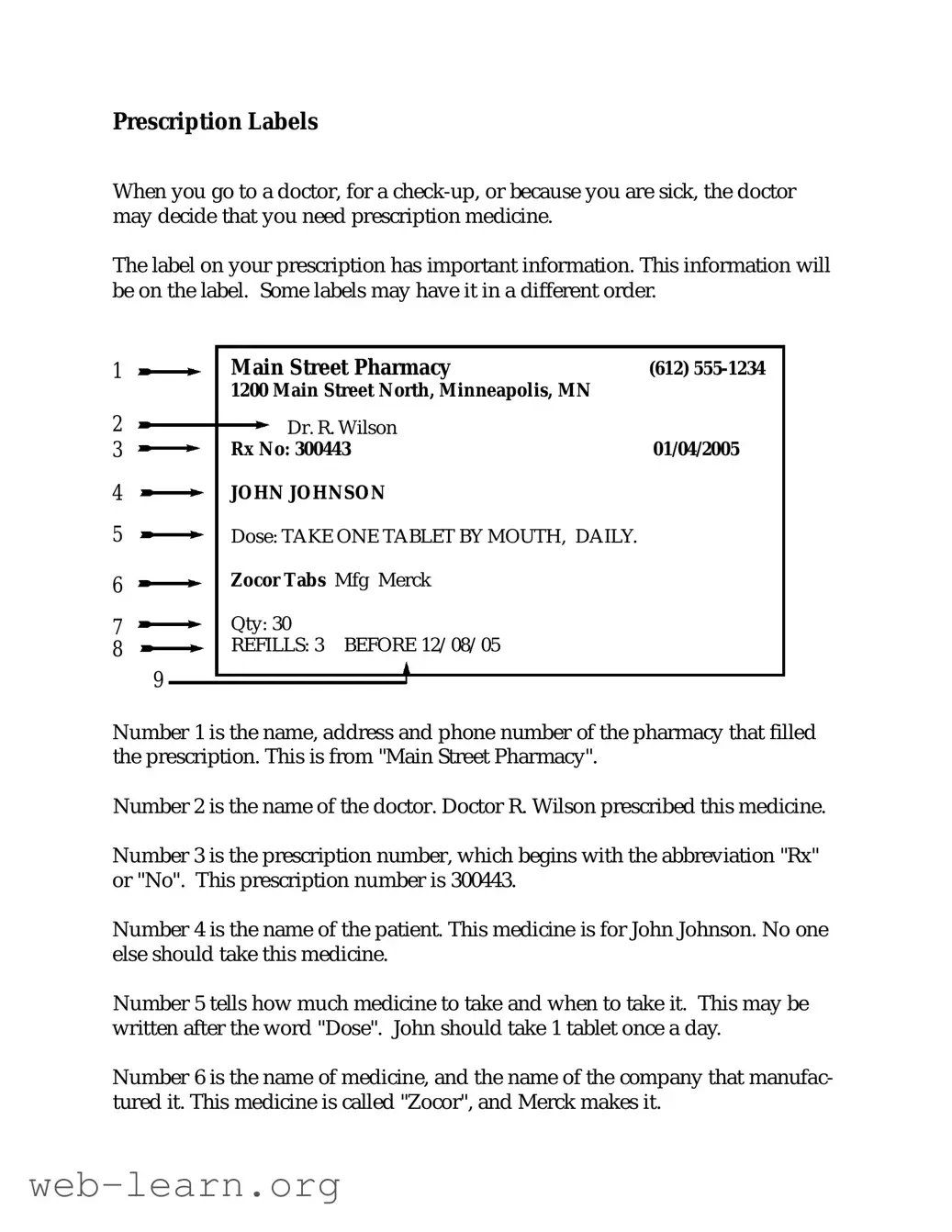Filling out a Prescription Label form seems straightforward, but many people stumble upon several common mistakes. Understanding these errors can help ensure that the information is accurately communicated, preventing potential issues with medication. Here’s a look at nine frequent mistakes that individuals often make.
One common mistake is omitting required information. Customers sometimes forget to include necessary details such as their name, address, or date of birth. This information is crucial in verifying identity and ensuring that the medication is correctly prescribed to the right individual. Always double-check that all required fields are filled out completely.
Another frequent error involves illegible handwriting. In cases where the form is filled out by hand, poor penmanship can lead to confusion. Pharmacists may struggle to read the doctor's instructions, which can result in incorrect dosage or medication. Utilizing clear, legible handwriting or opting for typed entries can significantly reduce this risk.
People also tend to forget to specify medication allergies. If a patient is allergic to certain medications, it’s crucial to indicate this on the form. Failure to do so might lead to a pharmacist dispensing a medication that could cause harmful reactions. Taking a moment to note any allergies is essential for safety.
Some individuals mistakenly provide inaccurate dosage information. This can include either writing down the wrong amount or misinterpreting the instructions. It’s important to carefully verify this information with the prescribing physician, ensuring that the correct dosage is noted to avoid any health risks.
Another misstep occurs when people neglect to include their contact information. Should any questions arise about the prescription, pharmacists need a quick way to reach the patient. By including a phone number or email, individuals can facilitate better communication with their pharmacy, ensuring that any issues can be promptly resolved.
Additionally, some patients do not review their insurance information thoroughly. Providing outdated or incorrect insurance details can lead to delays in processing the prescription or rejection at the pharmacy. Always verify that this information is current before submitting the form to avoid headaches later on.
People often forget to read the fine print. Ignoring the instructions or disclaimers on the form can result in misunderstandings regarding the medication or restrictions. It’s wise to take the time to read through all text carefully to ensure full compliance and understanding.
Moreover, individuals may not double-check the pharmacy’s information. Mistakenly directing a prescription to the wrong pharmacy can lead to unnecessary delays in receiving medication. Ensuring that the right pharmacy is listed is critical, especially if the individual requires timely access to their prescription.
Lastly, some individuals panic and submit the form without a final review. This rush can lead to various mistakes mentioned above. Taking a moment for a final review before submission can catch errors and clarify any uncertainties. By implementing this small step, patients can avoid many of the pitfalls associated with filling out a Prescription Label form.

